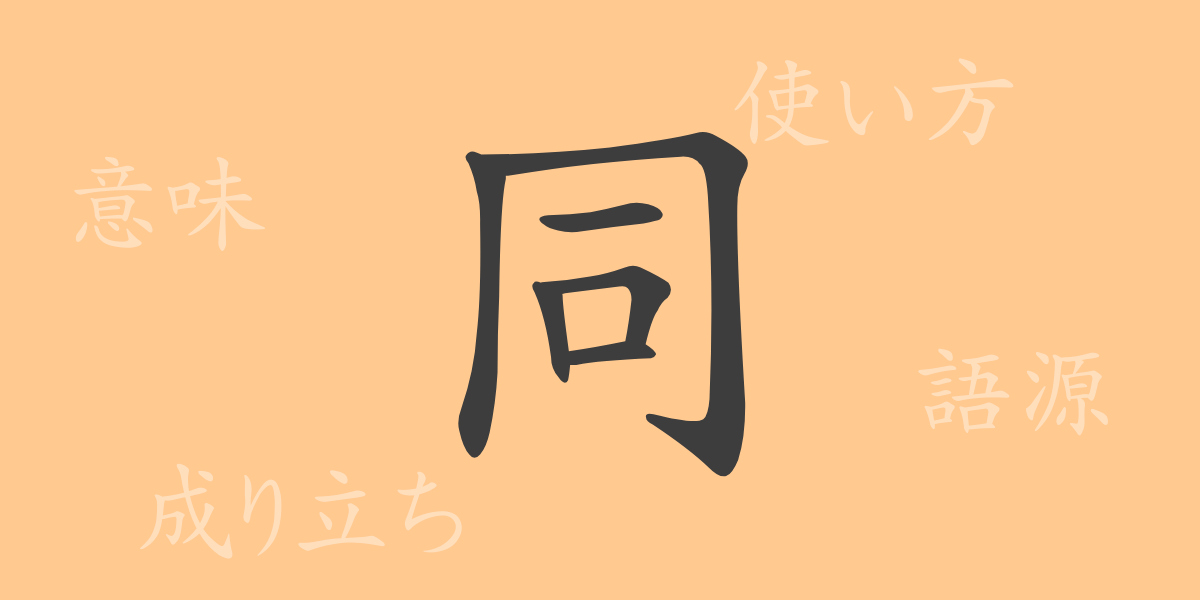In the rich tapestry of Japanese expression, commonly used kanji form the foundation of communication. Among these, ‘同 (どう)’ is frequently used in everyday conversation, literature, and business contexts. This article delves into the depths of the kanji ‘同’, exploring its origins, meanings, and uses, while also shedding light on how it appears in idioms and proverbs, thereby rediscovering the richness of Japanese expression.
Origins of ‘同 (どう)’
The kanji ‘同’ traces its roots back to ancient Chinese oracle bone script. Initially depicted as two parallel vertical lines, it represented the concept of being the same or identical. Over time, its form evolved into the current character we use today, commonly employed to denote concurrence or equality in status or condition.
Meaning and Usage of ‘同 (どう)’
The primary meanings of ‘同’ include ‘same’, ‘together’, and ‘equal’. In Japanese, it appears in phrases like ‘同じく (おなじく)’ and ‘同意 (どうい)’, which convey agreement or concurrence. It is also used in terms like ‘同居 (どうきょ)’ and ‘同行 (どうこう)’, describing situations where people live or travel together.
Readings, Stroke Count, and Radical of ‘同 (どう)’
‘同’ is widely used across various facets of the Japanese language, which reflects in its multiple readings.
- Readings: On’yomi ‘ドウ’, Kun’yomi ‘おな.じ’
- Stroke Count: The kanji ‘同’ consists of 6 strokes.
- Radical: The radical for ‘同’ is ‘口’.
Phrases, Idioms, and Proverbs Using ‘同 (どう)’
Many idioms and proverbs incorporate ‘同’, each enriching the Japanese language. Here are a few examples:
- 同感 (どうかん): To share the same feeling or opinion.
- 同行 (どうこう): To go along with someone.
- 同居 (どうきょ): To live together.
- 同志 (どうし): Comrades sharing the same ideals.
- 同情 (どうじょう): To sympathize with someone else’s situation or feelings.
- Idiomatic phrase ‘同じ穴の狢 (むじな)’: Used to describe people who engage in similar misconduct.
- Proverb ‘同じ釜の飯を食う’: Describes developing a close relationship by spending a long time together.
Conclusion on ‘同 (どう)’
The kanji ‘同’, despite its simple appearance, is utilized in a variety of expressive ways. Deeply embedded in our daily lives, ‘同’ symbolizes empathy and shared experiences, making it indispensable for enriching communication. Through this article, you have hopefully gained a deeper understanding of ‘同’ and its applications in Japanese, providing a glimpse into the complexity and beauty of the language.

























